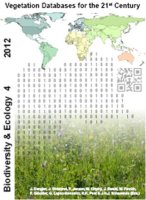Biodiversity & Ecology
Short Database Report Open Access
EVSItalia Database of Broadleaved Temperate Deciduous Forests
Keywords: Italian vegetation vatabase; TURBOVEG.
 English
English
Abstract: A database of phytosociological relevés of Broadleaved Temperate Deciduous Forests of peninsular Italy (Apennines, from Liguria to Calabria regional districts) is presented (EVSItalia Database of Broadleaved Temperate Deciduous Forests, GIVD ID EU-IT-011). The data-set aims to store information from published certified phytosociological sources, in order to support ongoing reviews based on larger data-sets for comparative classification of Italian vegetation types. The database stores 1,092 relevés, mostly from beech forests, along an altitudinal gradient. Three beech forest types are identified: between 800 and 1,000/1,100 m.a.s.l., a mixed forest with the presence of Q. cerris, Ilex aquifolium, Tilia sp. and Taxus baccata; above 1,100 m a.s.l. until the treeline, a beech-dominated forest; below 800 m a.s.l., relic Fagus forests, in very restricted areas of the Apennines. All the relevés are uploaded to the TURBOVEG software for plot databases. An ArcGis Database related to the TURBOVEG units reports localization information in GPS coordinates, toponym or quadrats (grid of Operational Geographic Units -OGU of the Italian floristic grid). Descriptive records of locations extracted from geographical information systems are also stored. The data model structure allows producing presence-absence or quantitative matrices for classification of communities and their parametrisation over larger areas by geostatistical analysis. The aims are to explore patterns of similarity among the distribution of different associations (chorological groups of associations, provincialism), patterns of geographic changes in community distribution along topographical gradients and to test changes in the physical scenario of selected individual communities along geographical gradients. A different insight into the patterns of synonymy and reassessment among syntaxa on the basis of a geographical treatise is expected as well.
Suggested citation:
Spada, F., Agrillo, E., Massimi, M. (2012): EVSItalia Database of Broadleaved Temperate Deciduous Forests. – In: Dengler, J., Oldeland, J., Jansen, F., Chytrý, M., Ewald, J., Finckh, M., Glöckler, F., Lopez-Gonzalez, G., Peet, R.K., Schaminée, J.H.J. [Eds.]: Vegetation databases for the 21st century. – Biodiversity & Ecology 4: 405–405. DOI: 10.7809/b-e.00193.


